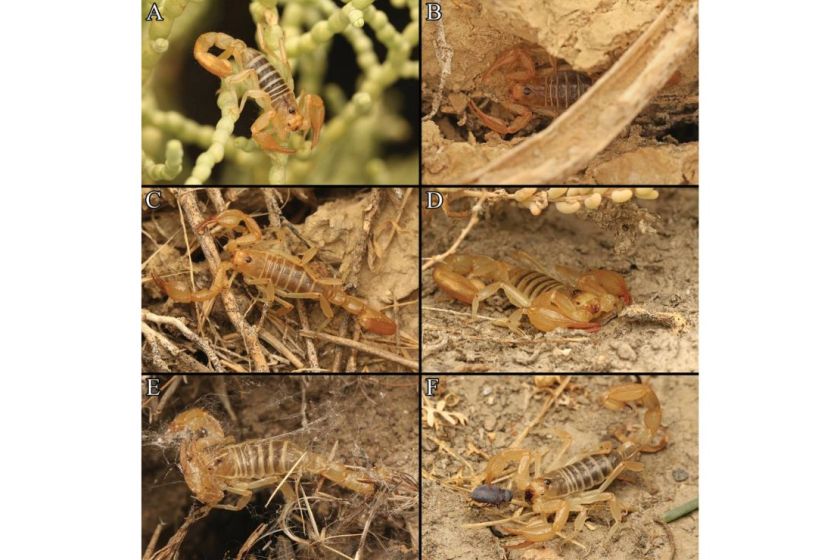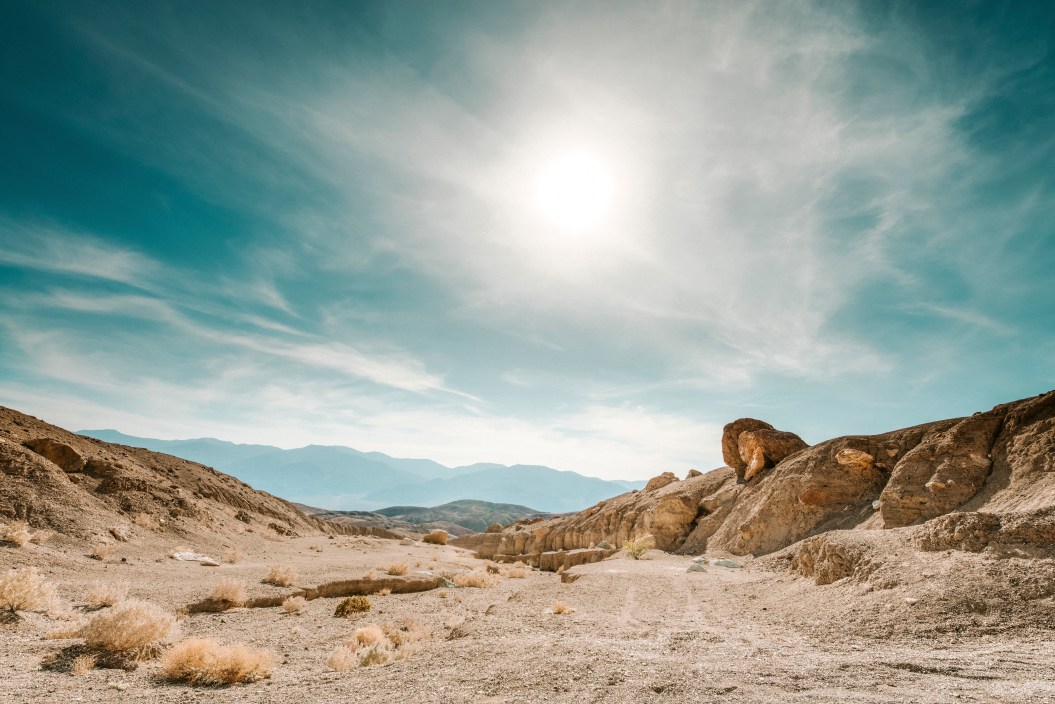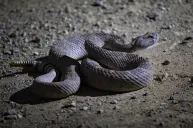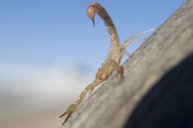Whether you're fascinated or horrified (or both) by creepy crawlies in the great outdoors, here's another critter to put on your radar: Researchers have confirmed the discovery of a previously unknown scorpion species in California's San Joaquin Desert.
It's not exactly new news: The venomous Tulare Basin scorpion, also called the Paruroctonus Tulare, was first discovered and photographed by citizen scientist Brian Hinds back in 2020. He posted his pics to the social network iNaturalist, which prompted the California Academy for Sciences to launch an official yearlong research initiative from 2021 to 2022. Its research efforts uncovered more than two dozen specimens—29, to be exact—and prompted the official naming of a new scorpion species. The results of that study were recently published in the peer-reviewed journal ZooKeys.
The Tulare Basin scorpion has eight legs, a smooth body, two heavily scalloped pincers, and an orange-yellow body with dark brown markings, according to the study.

Photo by Jain, Forbes, Gorneau, and Esposito
In a recent Facebook post, Hinds described the area where he found the first Tulare Basin scorpion as a "tiny little lot of land in the central valley that had been disturbed but not completely plowed over yet." The habitat is in Fresno County in part of the San Joaquin Valley within California's larger Central (Great) Valley, an expansive basin between the Coast Ranges and Sierra Nevada mountains.
He took some photos of the "odd-looking scorpions" that he'd never seen before and then moved on. While there, he also found a couple of side blotch lizards. It wasn't until others took notice of the photos online that Hinds realized he had discovered something special.
"Over the years I have discovered the Central Valley still holds biodiversity and many secrets in the little tiny pockets of habitat that remain, which isn't much as one can drive for mile after mile and see nothing but farms for as far as the eye can see," Hinds wrote. "It isn't a pretty or easy place to herp [sic] as one spends more time driving around or searching for habitat than one does actually exploring the habitats."
The Tulare Basin scorpion has been found at 12 sites scattered throughout Kern County and Fresno County, about 100 miles and 175 miles northwest of Los Angeles.
Although the scorpion is venomous, it doesn't pose a threat to humans, according to Lauren Esposito, assistant curator for California Academy for Sciences and the study's co-author.
The bigger risk is to the Tulare Basin scorpion itself, Esposito said, in that it faces a number of imminent threats to its survival, with most of them directly related to human activity. She believes the scorpion is likely already highly threatened with extinction, even though it was newly discovered.
"The most important step towards the conservation of [the Tulare Basin scorpion] is the preservation of alkali-sink plant communities by protecting the remaining high-quality habitat, controlling invasive species, limiting cattle grazing, restoring abandoned land, and combating the causes and effects of climate change," the study authors wrote. "Furthermore, due to its small and unstable range, we suggest that this species receive endangered or critically endangered species status, at least at the state level, so that it can be adequately protected."
READ MORE: New Species of Cobra-Like Snake Discovered




